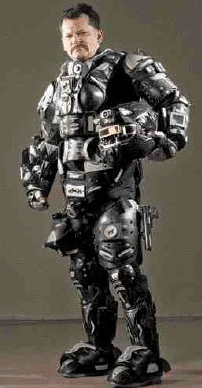New exoskeleton backpack lightens burden for soldiers, porters

Washington, Sept 20 : Researchers at the Massachusetts Institute of Technology (MIT) have created a device that would lighten the burden for soldiers and others who carry heavy packs and equipment.
Their invention, known as an exoskeleton, can support much of the weight of a heavy backpack and transfer that weight directly to the ground, effectively taking a load off the back of the person wearing the device.
Exoskeleton devices could boost the weight that a person can carry, lessen the likelihood of leg or back injury and reduce the perceived level of difficulty of carrying a heavy load.
The person wearing the exoskeleton places his or her feet in boots attached to a series of tubes that run up the leg to the backpack, transferring the weight of the backpack to the ground.
Springs at the ankle and hip and a damping device at the knee allow the device to approximate the walking motion of a human leg, with a very small external power input (one watt).
In this month’s issue of the International Journal of Humanoid Robotics, Hugh Herr, principal investigator of the Biomechatronics Group and associate professor in the MIT Media Lab reports that their prototype can successfully take on 80 percent of an 80-pound load carried on a person's back.
However, there’s one catch: The current model impedes the natural walking gait of the person wearing it.
“You can definitely tell it's affecting your gait. You do feel it taking the load off and you definitely feel less stress on your upper body,” said Conor Walsh, a graduate student who worked on the project.
Prof. Herr and his team now hope to create assistive leg devices that can be useful to everyone.
He said the leg exoskeletons would help people run without breathing hard, as well as help to carry heavy loads.
“Our dream is that 20 years from now, people won't go to bike racks – they'll go to leg racks,” said Prof. Herr.
The team is now working towards revising the design of the exoskeleton so that it mimics the movement of a human leg more closely, thereby allowing for more normal walking motion.
The research was funded by the US Defense Advanced Research Projects Agency. (With inputs from ANI)